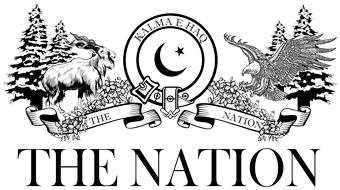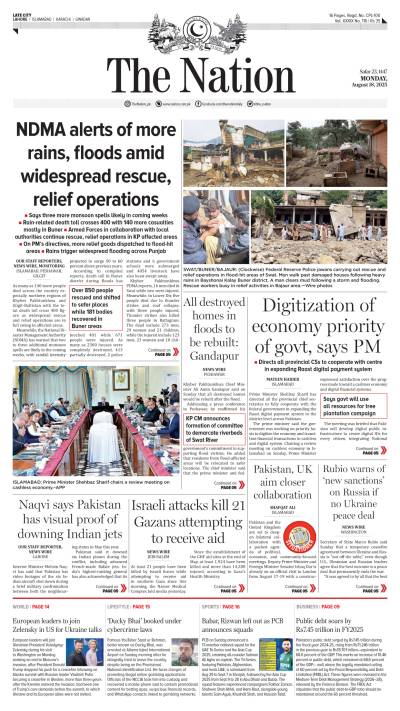A few weeks ago in Islamabad, I had the opportunity to attend an event hosted by COMSTECH that not only refreshed the concept of public diplomacy but also illuminated its practical dimensions from fresh perspectives. The occasion was the launch of The Currency of Influence, a book by Pakistan’s distinguished diplomat Dr Ahmad Ali Sirohey. The book offers a comprehensive and profound study of the evolving demands and challenges of public and economic diplomacy, weaving in the author’s vast professional experiences—particularly his tenure as Pakistan’s ambassador to Niger.
Across its pages, Dr Sirohey highlights themes such as soft power, cultural harmony, tolerance, and public engagement—concepts that are not mere rhetorical flourishes but, in reality, driving forces of state power in the modern world.
This brings us to a critical question: Is public diplomacy simply the name for a book launch, a speech, or a formal event? Or should it reflect a state’s long-term thinking, its narrative, and its conduct? The truth is that public diplomacy cannot remain confined to ceremonial statements or a handful of high-profile gatherings. It is a continuous, integrated process—one that must be reflected in the speech and conduct of every institution, every representative, and indeed, every citizen.
Nations are not solely recognized for their military might, economic size, or diplomatic alliances; they are known by the narrative they tell the world about themselves—and, more importantly, by the degree to which the world believes that narrative. The art of presenting that narrative convincingly, and winning hearts and minds in the process, is what we call public diplomacy.
Public diplomacy is far more than press releases and official statements. It is a multidimensional endeavour that shapes or erodes a country’s image through culture, education, media, digital platforms, international events, and interpersonal connections. In traditional diplomacy, governments talk to other governments; in public diplomacy, governments address people directly—opinion leaders, scholars, media, and the broader public. The goal is not merely to transmit information, but to embed a narrative and cultivate a lasting impression.
History teaches us that during the Cold War, the United States and the Soviet Union invested as much in the battle of narratives as they did in weapons. Voice of America, Radio Free Europe, Hollywood movies, and educational exchange programmes were all tools of American public diplomacy. The Soviet Union, in turn, sought to impress the world with its culture, sports, and development model. When the Berlin Wall fell, the credit went not just to NATO tanks, but also to the narrative that had changed hearts in Eastern Europe.
Today, the biggest battlefield for public diplomacy is the digital space. On Twitter, YouTube, Instagram, and TikTok, narratives can cross borders within minutes. States now market their culture, achievements, and policy positions through hashtags, short videos, and collaborations with global influencers. Turkey’s drama industry, South Korea’s K-Pop, and Qatar’s FIFA World Cup are all successful examples of public diplomacy that have built positive global perceptions.
For Pakistan, public diplomacy is even more critical because our image has, for decades, been shaped by negative narratives. Terrorism, political instability, and economic crises have weakened our global brand. Yet, we possess valuable assets that—if promoted effectively—could shift this perception: our mountains, diverse culture, culinary richness, youthful population, sporting legacy, and, above all, our geo-strategic significance.
Unfortunately, we have never given public diplomacy an institutional form with the seriousness it deserves. Our embassies remain bogged down in visa processing and protocol matters, while media, culture, and academia are rarely mobilized for global image-building. To show the world the Pakistan that truly reflects our identity, we need a long-term strategy, skilled professionals, and modern digital tools.
Public diplomacy is not just about stating your position—it is about understanding others. It is a two-way dialogue, not a monologue. This means establishing Pakistan Studies centers in global academic institutions, elevating our film and drama industries to international standards, increasing scholarships for foreign students, and setting up robust digital media cells in every major embassy.
In today’s world, it is not nuclear blasts but narrative explosions that leave the deepest impact. A compelling and heartfelt story can outlast any arsenal. The question is—are we ready to invest in this field? Because nations that do not tell their own story will find their story written by others—often by their adversaries.
T.M. Awan
–The writer is a Strategic Communication Advisor, researcher, and analyst specializing in international affairs. He can be reached at Hasilekalaam@gmail.com or on LinkedIn at @tahirmawan.







